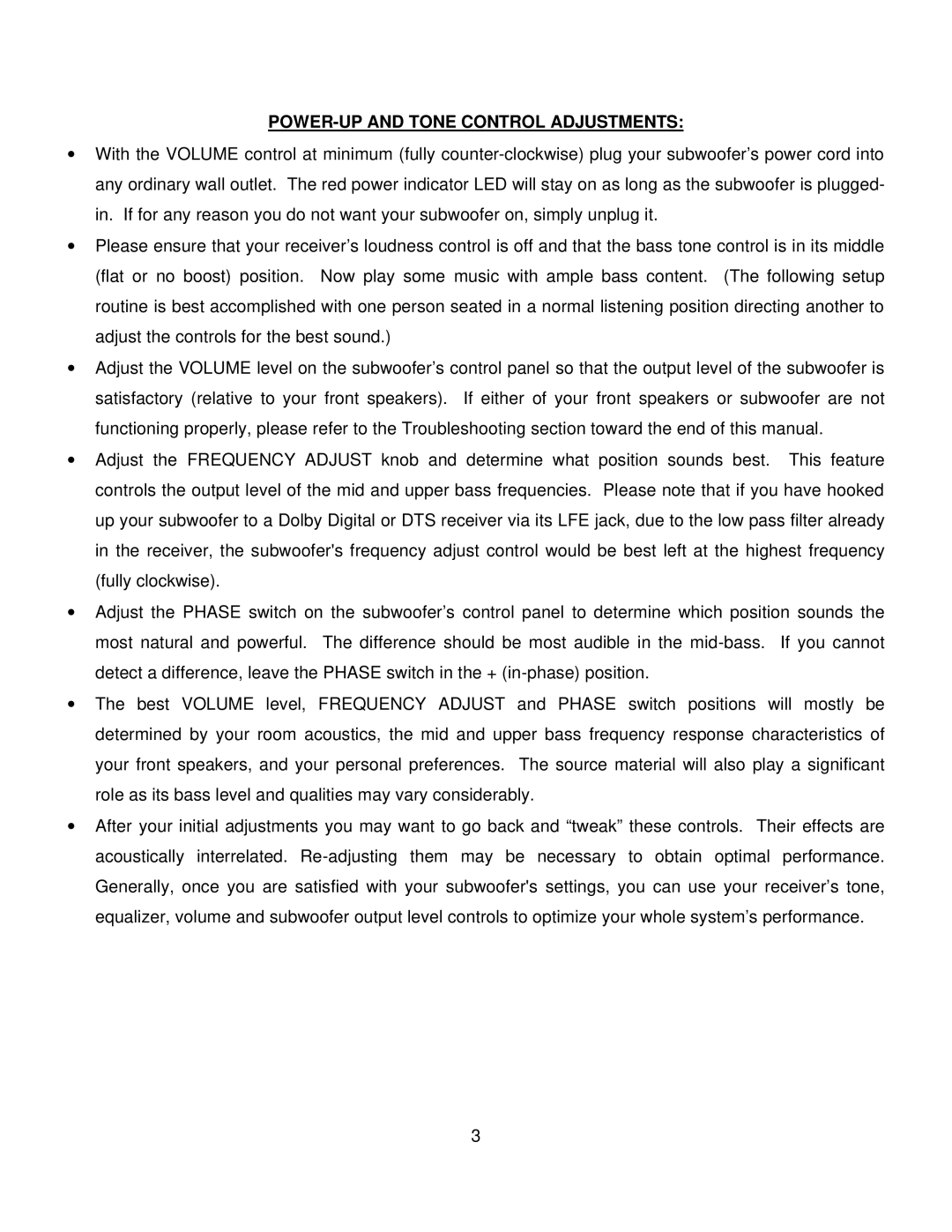POWER-UP AND TONE CONTROL ADJUSTMENTS:
∙With the VOLUME control at minimum (fully
∙Please ensure that your receiver’s loudness control is off and that the bass tone control is in its middle (flat or no boost) position. Now play some music with ample bass content. (The following setup routine is best accomplished with one person seated in a normal listening position directing another to adjust the controls for the best sound.)
∙Adjust the VOLUME level on the subwoofer’s control panel so that the output level of the subwoofer is satisfactory (relative to your front speakers). If either of your front speakers or subwoofer are not functioning properly, please refer to the Troubleshooting section toward the end of this manual.
∙Adjust the FREQUENCY ADJUST knob and determine what position sounds best. This feature controls the output level of the mid and upper bass frequencies. Please note that if you have hooked up your subwoofer to a Dolby Digital or DTS receiver via its LFE jack, due to the low pass filter already in the receiver, the subwoofer's frequency adjust control would be best left at the highest frequency (fully clockwise).
∙Adjust the PHASE switch on the subwoofer’s control panel to determine which position sounds the most natural and powerful. The difference should be most audible in the
∙The best VOLUME level, FREQUENCY ADJUST and PHASE switch positions will mostly be determined by your room acoustics, the mid and upper bass frequency response characteristics of your front speakers, and your personal preferences. The source material will also play a significant role as its bass level and qualities may vary considerably.
∙After your initial adjustments you may want to go back and “tweak” these controls. Their effects are acoustically interrelated.
3
